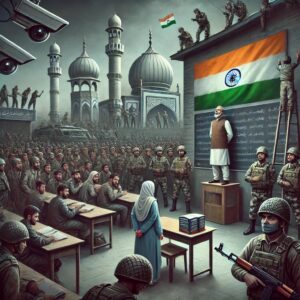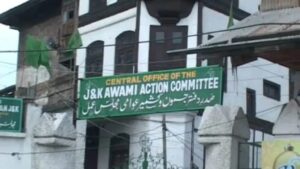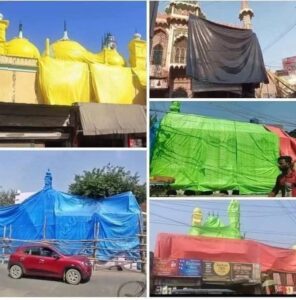
The Forced Patriotism in Kashmir
Mehmoodul Hassan
Kashmir, that once echoed with the cries of Azadi (freedom) now finds itself muted under the burden of hyper-nationalistic propaganda. The Indian state has turned the region into a theater, where Kashmiris are forced to play roles in a grotesque drama designed to portray love for their oppressor. The actors, unwilling participants, include teachers, students, different government employees, ex-detainees, and even religious leaders.
The Kashmiri government employees and ex-detainees are compelled to display the Indian flag as their WhatsApp profile pictures, while their statuses are filled with hyper-nationalistic videos. The message is clear – perform the role assigned to you or face repercussions. For many, this enforced display of patriotism is a painful betrayal of their identity and a daily act of self-erasure under the watchful eyes of a state that demands absolute submission.
On India’s Republic Day and Independence Day, government employees are marched into celebration functions where attendance is mandatory, and absence can result in dismissal from service. Teachers, once revered for their role in shaping young minds, are now reduced to tools of state propaganda. Their social media profiles, once personal spaces, are now battlegrounds where obeying the orders is the only refuge.
Even the sacred spaces are not spared. Imaams and Khateebs of mosques are pressured to align their sermons with the Indian state’s narrative. Even the pulpit is now monitored and censored. The azaan (call to prayer), in our mosques now struggles to rise above the suffocating climate of fear.
This circus, meticulously curated, is not just for the consumption of Indians but also for the international audience. It serves as a spectacle that aims to portray Kashmir as a land of contented citizens who have embraced their “Indian identity.” The tragedy lies in the fact that many Indians, including government officials and the military establishment, consider this farce as reality. They see the coerced compliance of Kashmiris as genuine allegiance and fail to recognize the pain and humiliation it entails. And even if they see the pain, would they care?
Fear is the glue that holds this charade together. The machinery of occupation has created an environment where dissent is stifled before it can even take shape. Pervasive surveillance, arbitrary detentions, and economic coercion ensure that the population remains in control. Kashmiris now navigate a reality where every action, every word, and even silence can have life-altering consequences.
In such a stifling atmosphere, preserving the narrative of resistance becomes an act of defiance in itself. It is very much important for us to ensure that the younger generation does not grow up disconnected from their history, their heroes, and the sacrifices made for their dignity and self-determination. The stories of those who fought for freedom must be passed down, not as relics of the past but as living testimonies of a struggle that continues.
For now, resistance may take subtle forms—preserving history, sharing stories, and nurturing a sense of identity. This is not surrender but survival. It is the quiet foundation upon which a stronger movement can be rebuilt when the time is right. The spectacle of enforced patriotism may dominate the present, but the spirit of resistance remains unbroken and waits for its moment to rise again. And it surely will.



